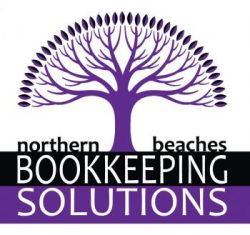For many small businesses, seasonal fluctuations can significantly impact cash flow. While peak seasons may bring in substantial revenue, slow periods can put pressure on finances and disrupt operations. Effective cash flow management during seasonal downturns is crucial for maintaining financial stability and preparing for future growth. Here’s how to manage cash flow effectively during seasonal downturns:
1. Analyse Seasonal Patterns and Forecast Cash Flow
Understanding your business’s cash flow patterns is the first step in preparing for seasonal downturns. Analyse historical sales data to identify peak and off-peak seasons. Create a cash flow forecast to project income and expenses over the coming months. This helps you anticipate financial shortfalls and plan accordingly.
2. Reduce Non-Essential Expenses
During slow periods, assess your expenses and identify areas where costs can be reduced or eliminated. Focus on variable expenses, such as marketing, subscriptions, or overtime wages. By cutting non-essential spending, you can conserve cash and minimise financial strain.
3. Negotiate Payment Terms with Suppliers
Open communication with suppliers can be beneficial during seasonal downturns. Negotiate extended payment terms to ease cash flow pressure. Additionally, consider bulk purchasing during peak seasons to secure lower rates and reduce costs during slower months.
4. Offer Early Payment Discounts to Customers
Encourage prompt payments by offering early payment discounts to customers. This incentivises clients to settle invoices quickly, improving your cash flow. For example, offer a 5% discount for invoices paid within 7 days.
5. Utilise Cash Reserves and Emergency Funds
If your business has cash reserves or an emergency fund, consider using these resources to cover expenses during slow periods. Avoid relying solely on credit, as interest payments can further strain cash flow. Establishing a cash buffer ensures that your business can continue operating even during lean months.
6. Implement Flexible Payment Plans for Clients
For clients struggling to pay invoices, consider implementing flexible payment plans. This approach helps maintain positive client relationships while ensuring a steady inflow of cash. Clearly outline payment terms and penalties for late payments to avoid misunderstandings.
7. Focus on Recurring Revenue Streams
To stabilise cash flow during seasonal downturns, focus on creating recurring revenue streams. This may include offering service packages, subscription plans, or maintenance contracts. Consistent revenue can provide a financial cushion during slower months.
8. Monitor Cash Flow Weekly
Cash flow management is not a one-time task. Monitor cash flow weekly to stay on top of financial trends and identify potential issues early. Regular cash flow reviews enable you to adjust spending, prioritise payments, and make informed financial decisions.
9. Seek Professional Cash Flow Management Support
If managing cash flow becomes challenging, seek professional assistance. A skilled bookkeeper can help you analyse cash flow, identify cost-saving opportunities, and implement effective cash flow strategies tailored to your business’s needs.
Conclusion
Managing cash flow during seasonal downturns is vital for small business sustainability. By forecasting cash flow, reducing expenses, and maintaining open communication with clients and suppliers, you can mitigate financial risks and ensure business continuity. Need expert guidance on managing cash flow? Contact Northern Beaches Bookkeeping Solutions today.
